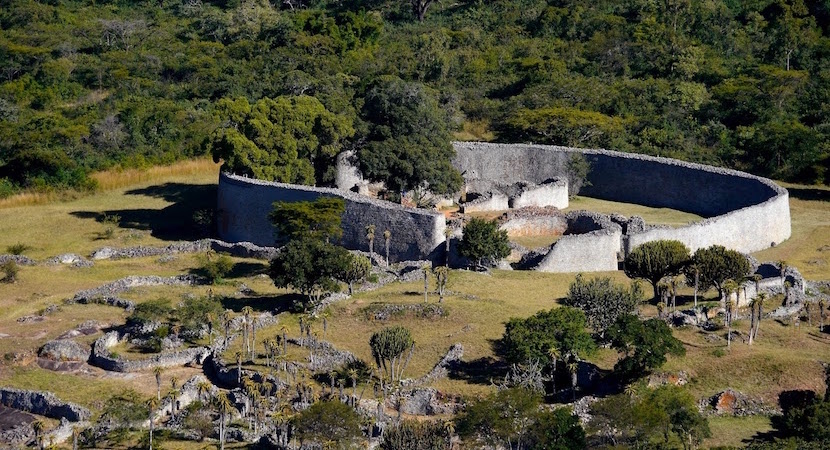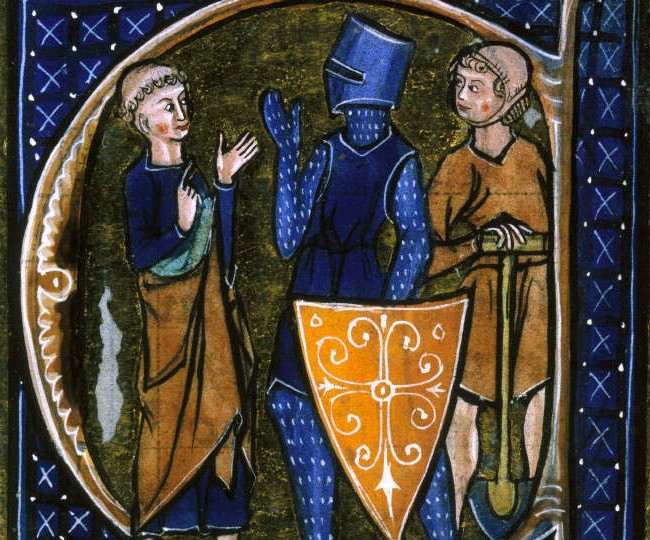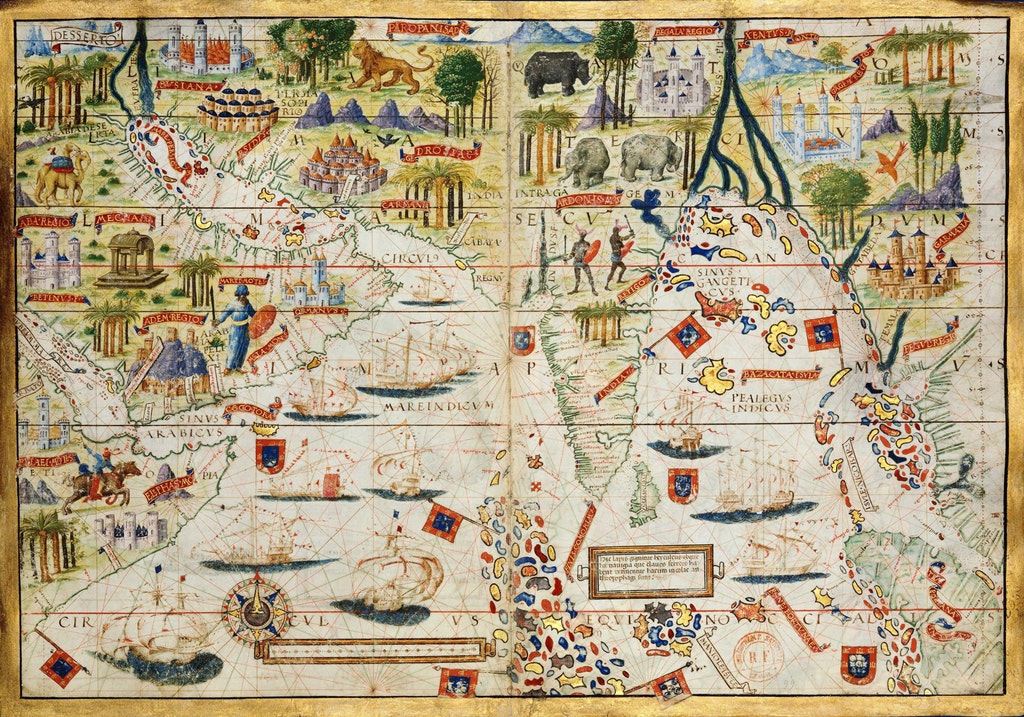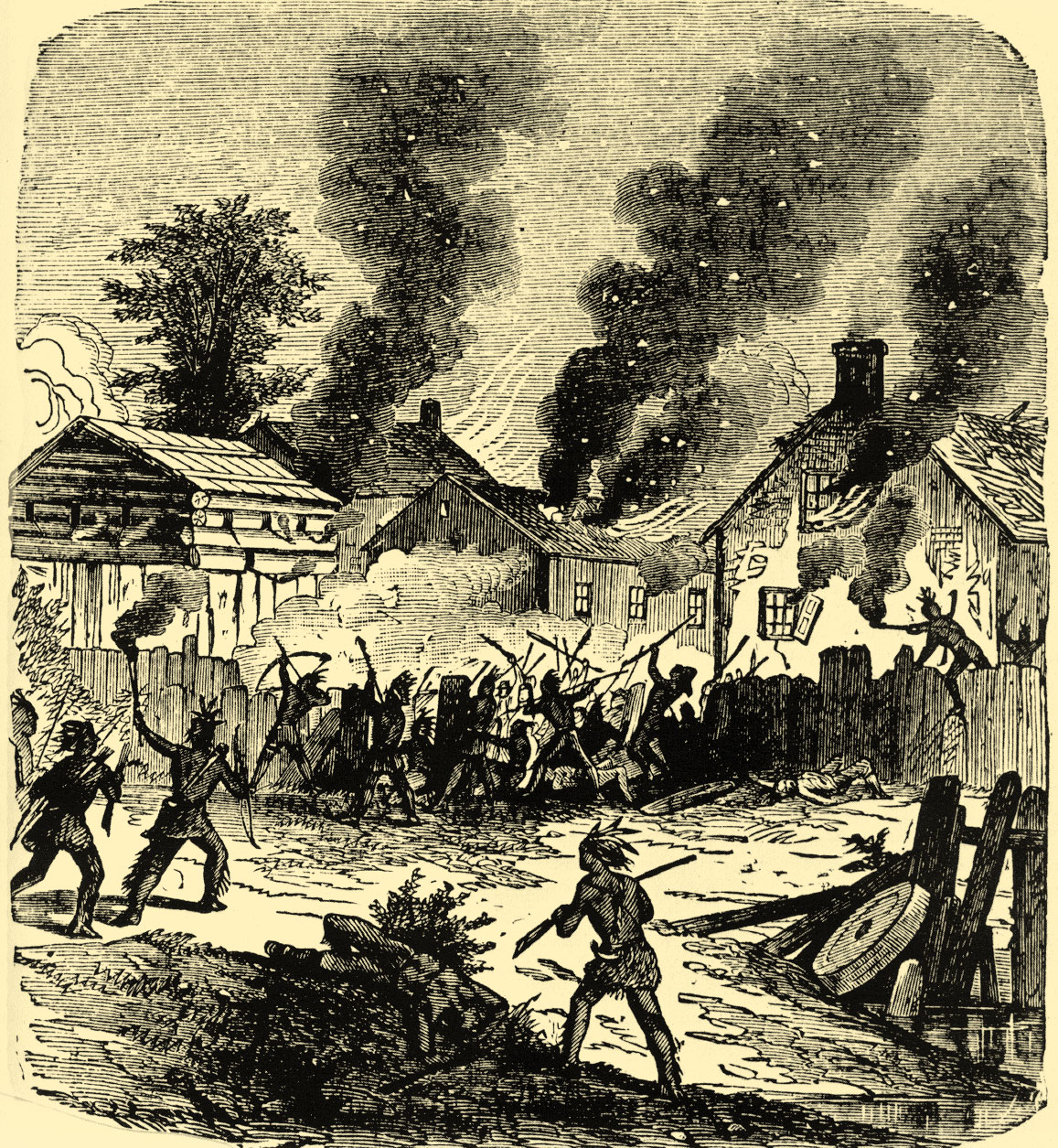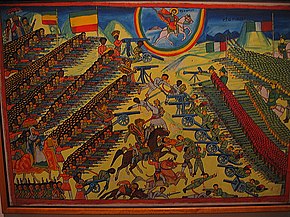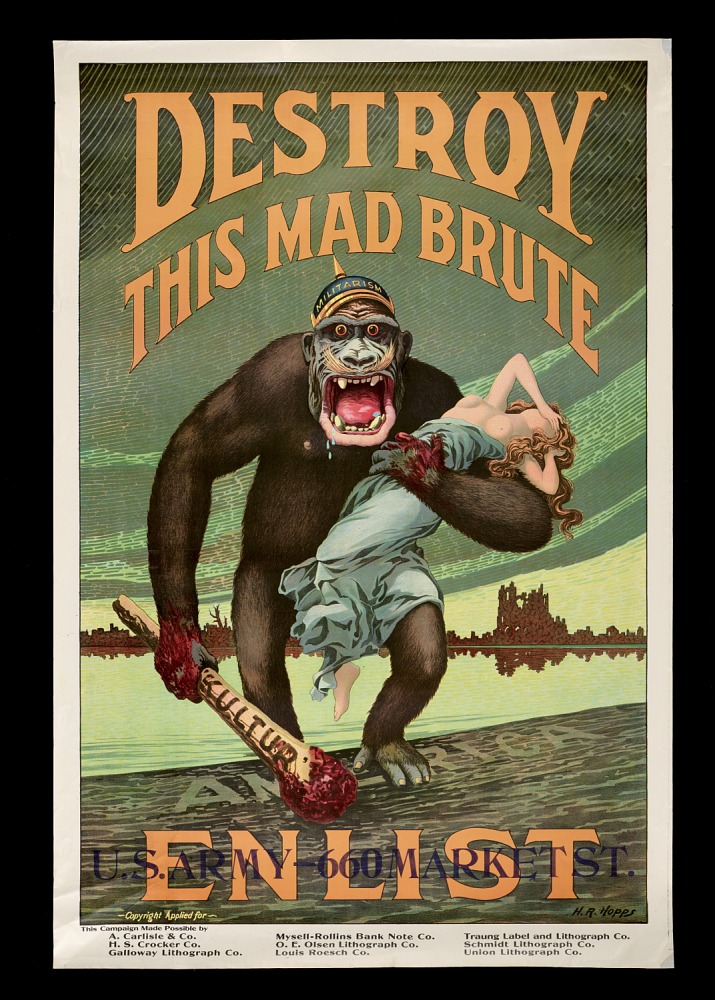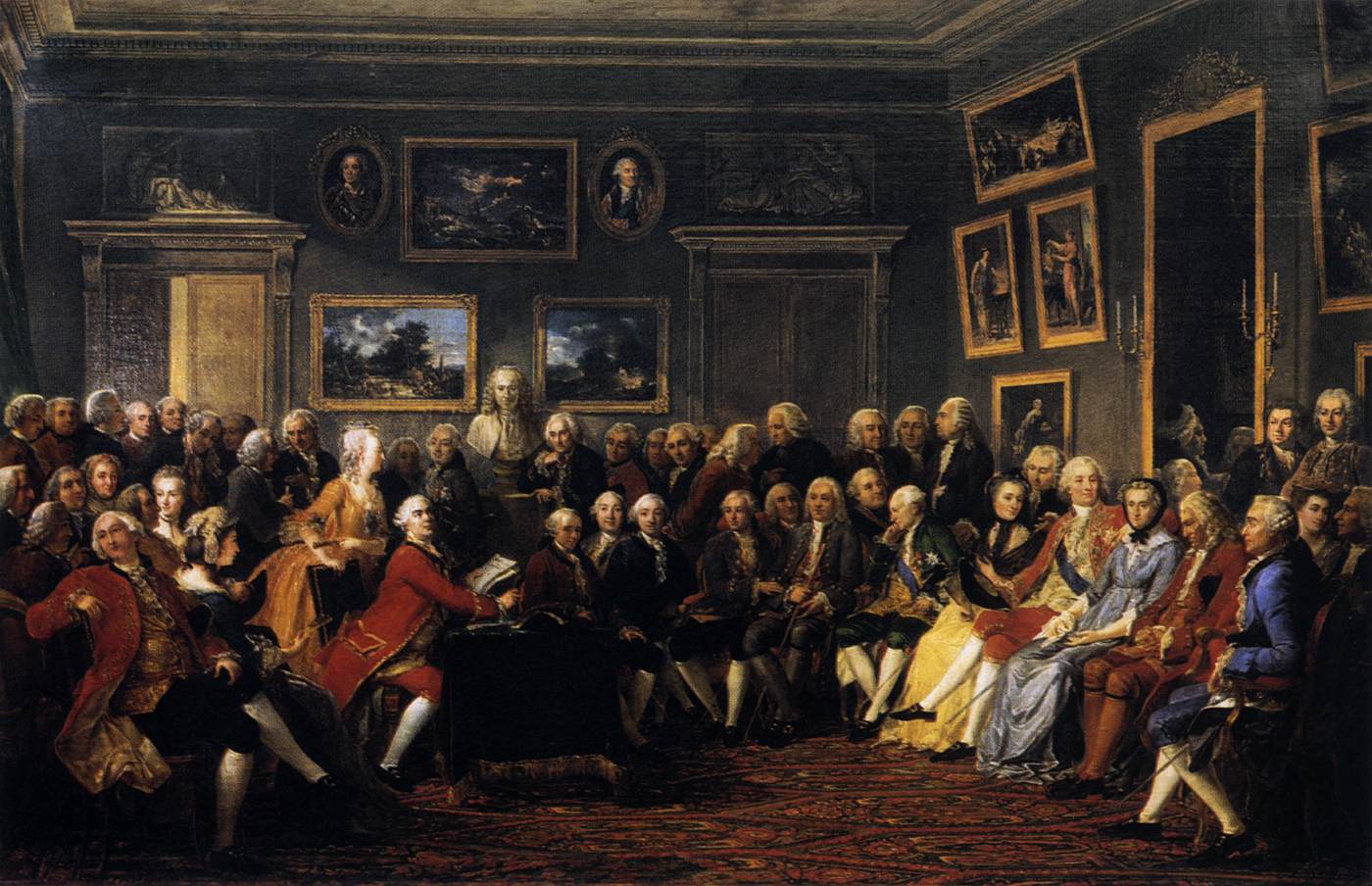👉The one thing you need to know about this theme:
Where does Power Lie?
The essential question this theme addresses is where does power come from, or where should it come from? This answer has changed throughout history and tracing and understanding those changes is a major part of understanding the other parts of this theme: how should power be distributed, how should power be limited, who is excluded from power. This spills over into other themes, so do not think of this theme in isolation. |
A variety of internal and external factors contribute to state formation, expansion, and decline. Governments maintain order through a variety of administrative institutions, policies, and procedures, and governments obtain, retain, and exercise power in different ways and for different purposes.
How do governments form, rise and decline, administer their states?
| Filial Piety | Mandate of Heaven | Caliph | Sultan |
| Khanate | Fuedalism | Fascism | Communism |
| Nationalism | Limited Government | Constitution | Social Welfare |
Much of Unit 1 and Unit 2 in AP World History Modern explores the different forms of governments across the globe
Imperial Rule in Song China
The Song Dynasty of China utilized traditional Confucian Values and an imperial bureaucracy to maintain and justify its rule.
Historically speaking Chinese dynasties up to this point mainly relied on Confucian values of Filial Piety and the Mandate of Heaven, which gave the emperor the right to rule and to assert the authority of the Emperor. The government had administered the empire through a system of bureaucrats selected from the exclusive Civil Service Examination which tested applicants’ knowledge of Confucian values.
The Dynastic Circle represents the Mandate of Heaven; Image Credit
Islamic Government in Dar-Al Islam
The Abbasid Caliphate traditionally held political and religious leadership in the Islamic world, with the Caliph being the leader of the whole Islamic community. However, by 1200 the Caliphate fragmented into new Islamic political entities, most of which were ruled over by Turkic peoples from Central Asia.
These include the Delhi Sultanate in northern South Asia, the Seljuk Sultanate in Asia Minor (Turkey) and the Mamluk Sultanate in North Africa. These states combined elements of Islamic rule with Nomad Traditions such as selecting rulers via election.
Ruling Titles in Islamic Political Entities
Caliph | Sultan | Emir |
The head of the entire Islamic Community (all believers), in theory, should rule all territory where Muslims reside. | Meaning “strength” this term applies to Islamic rulers, but it has no religious significance only earthly power | This term means “commander” and applies to hereditary rulers of small Islamic states. |
Hindu/Buddhist States in South/Southeast Asia
In part, due to a large increase in Trade in the Indian Ocean Trade Network, a number of new states emerged in these two regions usually, but not always situated on trade routes.
Image Credit
However, all of these states utilized the religions within their territories to justify their rule. For example, the Khmer built a massive temple complex at Angkor Wat (see picture above) to reflect Buddhist Cosmology (Towers represent Buddhist Realms), rulers in the Majapahit sometimes presented themselves as incarnations of Hindu Gods, and in the Vijayanagara Empire rulers took titles such as “Upholder of the Hindu Faith.”
States in South and Southeast Asia
South Asia | Southeast Asia |
The Rajput kingdoms The Vijayanagara Empire Sinhala Kingdoms | Majapahit Srivijaya Empire Khmer Empire Sukhothai kingdom |
For example, the Majapahit and Srivijaya Empire, Sinhala Kingdoms (one leader of whom was taken back to China by Zheng He), the Vijayanagara Empire were all empires that heavily depended on trade throughout the region to reinforce authority. The Rajput kingdoms, Khmer Empire, and Sukhothai kingdom were more land-based and did not rely so much on trade for their prosperity.
State Expansion in the Americas
Across North and South America new states expanded their rule. Some political organizations such as the Maya city-states (Mexico) the Chaco and Mesa Verde (New Mexico) continued to operate on a smaller scale of individual cities or settlements, not organized into larger states.
However larger states did emerge such as Cahokia (Mississippi, also known as the Mound Builders), Mexica (also known as the Aztecs), and Inca (in the Andes). Even these larger states were built on earlier political states (except Cahokia), and all were situated on strategic trade locations like the Mississippi River or Lake Texcoco. These larger states often demanded tribute like the Mexica or incorporated conquered people like the Inca.
Trading States in Africa
Throughout Africa, a number of states, large and small arose during this time relying on trade and cultural force to unify their realms. In East Africa the state of Ethiopia continued the traditions of their earlier predecessor Axum, Ethiopia was the heart of African Christianity and to this day remains a Christian Nation, testified to by the elaborate Church of Saint George. Ethiopia also continued to trade through the Indian Ocean Trade Network.
In South Africa, the large stone complex that is the Great Zimbabwe traded gold to East Africa. In West Africa, the Hausa Kingdoms (Nigeria) and the Kingdom of Mali traded goods such as gold, animal products, slaves and salt across the Trans-Saharan Trade Network. The Kingdom of Mali, like Ethiopia, also used religion (Islam) to demonstrate influence, an example is Mali king Mansa Musa famously going on Haj to Mecca.
The Great Zimbabwe, from here rulers extended their authority over surrounding lands; Image Credit
Fragmentation in Europe
For much of this time period Europe was fragmented into smaller feudal states characterized by decentralized monarchies. The fragmentation of the Carolingian Empire after 900 CE had led to monarchies such as the Holy Roman Empire, where kings were weak and relied upon lords for support in war and running their kingdoms. In turn, these Feudal Lords were allowed to run Manors where they could tax the working serfs (peasants) in terms of both goods and labor. The lords employed trained warriors referred to as Knights. During this time urbanization or the size of cities was quite low and trade was restricted to local areas. Only when trade resumed, crop yields improved, and stability returned did states began to centralize into regional monarchies in nations such as Spain, Portugal, England, and France.
A painting of the Feudal Classes: “Those who Fight, who Pray and who Work”; Image Credit
The Mongol World System
The lightning conquests of
Ghengis Khan and the nomadic
Mongols from the steppes of northern Eurasia ushered in a new era of states in Eurasia. The Mongols conquered or disturbed most of the established Eurasian states such as Persia, China, Russia (conquered) India, Japan, Vietnam, Hungary, and Egypt (clashed with). The Mongols in their new state-imposed new traditions and policies on their subjects such as
religious tolerance,
foreign administrators (Persian bureaucrats in China), and
expanded trade. Though the Mongols also absorbed much of the local culture such as in China (Yuan Dynasty) or Persia (Ill-Khanate) where Mongols assimilated and became settled rulers. After the Mongols, another ruler named Tamerlane led another round of conquests uniting Persia, northern South Asia, and was on his way to China when he died. The nomadic states known as Khanates promoted trade, and tolerance to an unusual degree, utilizing foreign to maintain their power, but their states were unstable and often did not last long.
Much of Unit 3 and Unit 4 in AP World History: Modern focuses on the expansion and evolution of existing empires via technology and administrative systems.
New Tools of Empire
Improvements in existing technologies specifically those that revolved around gunpowder, and communication helped strengthen, expand and transform new and existing empires.
The rise of armies that relied primarily on gunpowder weapons, from cannons to muskets and rifles defined this time period. This was the result of the diffusion of gunpowder out of China under the Mongols. In the Islamic World new Empires such as the Ottomans, Mughals and Safavids used gunpowder to control territory traditionally dominated by nomads and established formidable states. In Europe kings, such as Louis XIV of France used gunpowder to weaken his nobles and centralize power under a professional army. In Japan, at the Battle of Nagashino (1575) a small force of Musketeers defeated a much larger force of cavalry, and paved the way for Japanese unification under the Tokugawa Shogunate.
The major
maritime states such as the
Portuguese,
Spanish,
Dutch,
French, and
British Empires put gunpowder weapons on their ships to control trade and protect coastal territory. The Portuguese
Carrack was one of the first ships to be mounted with cannons and aided the Portuguese in their efforts to dominate the Indian Ocean Trade. The Spanish
Galleon is an excellent of a heavily armed ship controlling trade, only a handful of which were ever captured in their 400 year history.
The diffusion of printing technology in Europe helped states solidify their positions. The Protestant Reformation fragmented European Christianity, but Martin Luther’s ideas would not have spread so far without moveable type, and some rulers, embracing Protestantism as a ruling ideology utilized the printing press to help spread their ideas such as Albert, Duke of Prussia who used Lutheranism to solidify his power.
Empires on Land and Sea
Empires have always constructed large edifices to justify their ruler, this trend continued into this era. Large palaces such as at Versaille in France or religious structures such as the Blue Mosque in Constantinople or the Sun Temple in Cuzco, or painting styles reinforcing rule such as Miniatures in the Ottoman Empire or the Qing Dynasty Portraits in China. These paintings demonstrated the might of the rulers or their support for the arts by commissioning their creation, meaning a cultured and learned leader. Building projects are designed to demonstrate wealth, authority or religious credentials of rulers via their creation or public display.
Works of Art and Architecture in Empires
Religious Piety | Power | Economic Might/Wealth |
Blue Mosque, Ottoman Empire Sun Temple at Cuzco, Inca Empire Taj Mahal, Mughal Empire | Red Fort, Mughal Empire Qing Dynasty Portraits, China Forbidden City, Ming Dynasty, China | Bazaar at Isfahan, Safavid Empire Palace at Versailles, France |
The major empires used specific administrative systems to reinforce their rule such as the Devshirme system in the Ottoman Empire, which drafted children with no preexisting connection to the state to be bureaucrats, or the system of Salaried Samurai in Tokugawa Japan, where the ruling Shogun (military ruler) hired Samurai to administer the state. These systems tried to prevent corruption by removing individual or groups who might have local ties and could build a power base. China continued to use their civil service exam which potential candidates tested to demonstrate their understanding of Confucian Values of government.
Other empires continued the tradition of using landed nobles who already held power in their land to help run the government. However this practice sometimes resulted in rebellion if there was a leader who was weak or perceived as weak such as the Fronde in France during the late 1600s, where nobles tried to wrest power from the new king.
In terms of overseas expansion, some states such as the Tokugawa in Japan and to a lesser extent the Qing in China adopted more isolationist policies, believing these would help keep social stability by preventing the spread of European culture. Other states however encouraged or even supported overseas expansion such as the Portuguese and Spanish who sponsored explorers such as Vasco de Gama and Christopher Columbus. These states established Trading Post Empires, and adopted Mercantilist Policies, which limited the amount of free trade allowed between nations.
Image Credit
A Portuguese map from the 1550s. Note the settlements are on the coast, the Portuguese established a Trading Post empire, the goal of which was to control the ocean trade not conquer landed territory. The Portuguese used their naval technology to accomplish this.
Other states supported private Joint Stock Companies, as a means of projecting power if the state did not have a large colonial empire, such as the Dutch or English gave their approval to operate these companies. These companies such as the Dutch East India Company which were the forerunners to modern corporations.
Internal and External Challenges
Challenges to empire came from various sources.
State Rivalries played a major role in limiting the growth of empires in this time period. The Ottoman and Portuguese clashed in the Indian Ocean, preventing the spread of the Portuguese into the Red Sea.
The Dutch and the Portuguese clashed over control of Brazil. The Ottomans and the Safavids clashed over control of Mesopotamia (modern Iraq). The Sultanate of Morocco invaded West Africa to conquer the Songhai Empire for its vast wealth Empires competed over land and territory, usually which had valuable resources, religious importance or land that was the heart of trade routes.
Resistance within colonies or from people being encroached on by Europe also played a major role. For example throughout the European Colonies in the Americas, Slaves and Native Americans resisted the power of European Colonists. Slaves ran away and formed Maroon Communities in the hills and jungles, harassing European plantations. In New England, a Native American leader named Metacomet (King Philip), led a coalition of Native Americans and attempted to drive the European Colonists out of the region.
Image Courtesy of Wikimedia;
Native Americans attacking a settlement in Massachusetts, during King Philip's War. This conflict was sparked by the increasing number of colonists in New England and their encroachment on Native land, this resistance was part of a larger pattern of Native American Resistance.
Within states, often social classes revolted or resisted centralizing power. For example in Russia, where a group of horse riding nomadic warriors known as Cossacks, who had long been used by the state to expand its borders revolted a number of times against the state. Their complaint was most commonly that the Russian Tsar was encroaching on their traditional rights, most famously claimed by Stenka Razin, who led a revolt in the 1670s.
The Enlightenment and Revolution
In part a result of increased print communications, as well as the increase in scientific literature, the intellectual movement referred to as the Enlightenment, consisted of philosophers who debated ideas about how to organize society and the source of political power for example should power be vested in a single king or some form of representative government?
Thinkers such as John Locke, Voltaire, or Montesquieu put forth new ideas about the origin, obligations, and ideal types of government. These included fundamental human rights (John Locke) limiting the power of religion in public life, known as secularism, the idea that the heads of government should be limited by written laws such a constitution, known as the rule of law, [this idea is actually much older than the enlightenment, but our modern conception comes from this time] (Voltaire) or a separation of power in a government (Montesquieu). Though these ideas were not always granted to everyone in the centuries to come, they nonetheless helped inspire waves to revolutions across the world.
Enlightenment Thinkers and their Ideas
John Locke | François-Marie Arouet (Voltaire) | Montesquieu |
“The proper state is not political dictatorship but democratically elected government and the effective protection of basic human rights to life, liberty, and property under the rule of law.”
Two Treatises of Government (1660) | “The institution of religion exists only to make men merit the goodness of God by their virtue. Everything in a religion which does not tend towards this goal must be considered foreign or dangerous.” Dictionnaire philosophique (1764) | “When the legislative and executive powers are united in the same person, there can be no liberty; because the same monarch or senate should enact tyrannical laws, to execute them in a tyrannical manner.” The Spirit of the Laws, (1748) |
Its very important to understand these are radical departures from how politics had been conceived around the world up to this point. A single, powerful king or leader was the historic norm, organized religion had gone hand in hand with the state, see most of the states in Unit 1, and these new ideas would continue to inspire change, push back and debate in the centuries to come.
In the Atlantic World in the 1750s, a wave of revolutions began. These were caused by discontent with Imperial Rule (United States, Haiti and Latin American) or the existing Monarchy (France). While these revolutions were often triggered by economic concerns such as taxation or food availability (United States and France) or social issues such as oppressive slavery or social hierarchies (Haiti and the Latin American) Revolutions, nonetheless Enlightenment ideas influenced these movements.
Nationalism
Inspired by the French and American Revolutions, the spread of literacy and communication, industrialization which brought people together in urban settings, people around the world began to develop a new sense of commonality based on language, religion, social customs, and territory this is referred to as Nationalism. Nationalism is different in several ways from the Enlightenment ideas, for example it put the ethnic or cultural identity above ideas of civil liberty or property.
This new sense of Nationalism rejects a sense of loyalty to a monarch, a single ruler, or religion. Sometimes this national vision is harkened back to a mythical past of a lost civilization that a group of people descended from, or it presented a bright future for the group of people and/or society.
Newly imagined national communities often linked this new national identity with borders of the state. These states were sometimes conformed to geographic boundaries such as in Puerto Rico, or the Philippines (islands), existing demographic distribution such as in the Balkans, or a situation in which a society is fragmented across many states, such as in the German States. This sense of nationalism was sometimes harnessed by governments to foster a sense of unity like in the Ottoman Empire which promoted Ottomanism to unify the country in the 1870s (Not to be confused with the Young Turks movement which came later in the 1890s).
Image Credit
The rise of a system of education, public holidays, mandatory military service and overseas expansion were used by various governments to unite their people and give them a sense of common identity. Requiring all citizens to serve in a military brings together a widely spread population for a common purpose. Education can instill a sense of pride in one’s country. This can be seen in Meiji Japan, the United States, and Imperial Germany.
Responding to Industrialization
As the technological and social changes of the Industrial Revolution began to be felt in Europe, the United States, Russia and Japan, governments expanded their roles in society.
Many governments began to actively support industrialization efforts. This includes via protective policies, or the construction of transportation networks such as the Trans-Siberian Railway in Russia or the Transcontinental Railroad in the United States.
In Japan, the new Meiji Government actively promoted the nation’s industrialization via financial aid and the newly created Bank of Japan, and sponsored education to help promote local industrial growth.
In Egypt the new leader Muhammad Ali sought to build an industrial base modeled on the Industrial Revolution in Great Britain, that is via textile production. These moves were out of a recognition that a nation’s power and wealth would come from the new Industrial economy.
Both before and during the Industrial Revolution a number of thinkers began to advocate changes to the role of government. Adam Smith promoted an idea of Laissez Faire government in terms of its relationship to Industry, where the government did not interfere with economic growth (these ideas would later become known as Capitalism). Other thinkers such as Jeremy Bentham said the government should promote the greatest good for the greatest number of people, an idea that became known as Utilitarianism. More famously Karl Marx and Friedrich Engels put forth a theory of history, centered on the topic of class struggle and ended with the dissolution of private property (these ideas became known as Communism)
Government’s responses to Industrialization on a social level varied. Some such as Germany and the United States passed social welfare laws, which protected people if they were injured on the job, or created retirement pensions.
Examples of German Social Welfare Laws
Health Insurance Bill of 1883 | This program provided health insurance for German workers. The health service was established on a local basis, with the cost divided between employers and the employed. The minimum payments for medical treatment and sick pay for up to 13 weeks were legally fixed. |
Workers Protection Act of 1891 | This law banned work on Sundays, introduced a maximum working day of eleven hours for women and ten hours for workers under 16 years of age and prohibited night work by them, and encouraged the establishment of workers committees in factories to address disputes. |
Children's Protection Act of 1903 | This act outlawed labor for children under the age of 13 in factories and introduced fines for employers found violating the rule. |
Many states also created universal systems of education. Russia abolished serfdom, which ended the labor obligation of peasants, but did not grant them any legal protections. In many places women began to advocate for the right to participate in politics because of their role in factories and increased educational opportunities such as the Suffrage Movement in the United States.
Imperialism
Both as a result of the Industrial Revolution and discontent at home, many European States, the United States and Japan undertook imperial expansion. These territorial acquisitions were funded, directed and administered by the central governments, which now saw imperial expansion as necessary, and not indirectly as before under private companies.
In Africa, most European powers undertook efforts to control territory such as the Belgians in the Congo, the British in West Africa and the French in North Africa. The reasons for these expansions varied, the British and Belgians wanted control of strategic industrial resources such as rubber (the Congo) or palm oil (West Africa), the French on the other hand used expansion into North Africa as a way to distract from domestic troubles at home.
In Asia, European powers took more direct control of previously private colonial holdings such as the British over Singapore and the Dutch over the Dutch East India Company in Indonesia. These were also efforts to control strategic resources or trade routes. Japan also undertook Imperial Expansion against their neighbor, specifically Korea and China.
Resistance to Imperial Rule
Anti-imperial resistance took various forms, including direct resistance and formation of alternative states opposed to empires.
Direct resistance to Imperial rule was common and usually occurs within empires led by the indigenous peoples of the region. Often this included direct military confrontation which attempted to defeat Imperial Powers on military terms. Examples include Tupac Amaru’s rebellion in Peru against the Spanish or the Sepoy Rebellion against the British in India. Native American Tupac Amaru claimed to be the descendant of the last Inca Emperor and led a revolt of Native Americans protesting the brutal labor demands of Spanish rule.
Many movements took their inspiration from religion, such as the Mahdist movement in Sudan, the Ghost Dance Movement in the U.S., the Taiping Rebellion in China, and the Xhosa Cattle-Killing Movement in southern Africa.
All of these resistance movements were inspired by religious visions or charismatic religious leaders. Often these visions described a glorious future in which the intruding imperial power would be driven out or overthrown and the people would be restored.
Additionally, states formed or resisted Imperial encroachment during this time. For example, Ethiopia resisted Italian efforts to conquer their territory via the use of modern military technology and the various Balkan states which formed on the edges of the Ottoman Empire won their independence through hard-fought battlefield victories, sometimes with the help of outside powers such as Russia. These new states also utilized Nationalism to motivate their people to resist encroachment by a foreign power.
Image Credit
A painting of the Battle of Adwa in 1896 when Ethiopian Forces defeated an invading Italian Army. The case of Ethiopia was a successful attempt to resist foreign encroachment.
The West dominated the global political order at the beginning of the 20th century, but both land-based and maritime empires gave way to new states by the century’s end.
Challenges to the Existing Order (in the first half of the 20th century)
As a result of internal challenges and the upheavals of World War I, most of the major land based empires, the Ottoman, Russian, and Qing empires collapsed. Russia and the Ottoman Empire succumbed to internal revolution because of the social and economic stresses of World War I. The Qing dynasty fell to revolutionaries who sought to modernize the country.
These new governments often sought to implement political and economic ideas that reflected European practices of the last 100 years, places such as in Turkey, where the new leader Ataturk reorganized the alphabet along Latin line v the old Arabic based alphabet, and the Republic of China which sought to establish representative democracy.
However, in other places, new governments challenged the existing order such as the first Communist state in the Soviet Union and the reformist government in Mexico after the 1910 Revolution which implemented some socialist policies.
A new political form known as Fascism developed in Europe during this time. Fascism emphasized the power of the state and the collective good of the country over the rights of individuals. Fascist states such as Germany and Italy were intensely nationalistic and hostile to both democracy and communism.
Governments and War
The two major world wars that devastated the planet radically changed the way governments waged wars.
World War I was the result of competition between governments for imperial territory, particularly Germany, France and Great Britain, as well as territory within the Balkans such as between Austria-Hungary and the Russian Empire. Germany in particular wanted to gain more colonial holdings in Africa and Asia. Austria-Hungary and Russia both sought to expand their influence in the Balkans as the Ottoman Empire declined.
World War II would also be begun in pursuit of territory, Japan and Germany in particular claimed the need for more territory in order to sustain their economies and populations, specifically the idea of Lebensraum (living space) in Germany and the East Asia Co-Prosperity Sphere which represented a Japanese centered Pacific Region. Both nations undertook wars of expansion to acquire this Territory, Germany in Eastern Europe and Japan in the Pacific and China.
Image Credit
A propaganda poster from the United States during World War was meant to encourage negative feelings towards Germany. Propaganda was a tool of Total War used by all governments
The alliance system, by which nations agreed to protect each other in the event of war had the effect of making a minor incident (the assassination of the heir to the Austria-Hungarian throne) in the Balkans into a global war. This would also play a role in World War II. The Authoritarian powers (Nazi Germany, Fascist Italy and Imperialist Japan) joined forces in part on their common opposition to the spread of Communism from the Soviet Union, the Anti-Comintern Pact.
In both World War I and World War II governments waged total war. Governments used a variety of strategies, including political propaganda, forms of nationalism, to mobilize populations, both fascism and communism portrayed their war struggles as conflicts of ideological systems against another ideological system, to mobilize all of their state’s resources for war. Other forms of control included nationalizing industries and creating rationing boards. The powers with colonial holdings also used colonial troops in battlefields across the world in both World Wars.
Colonial Resistance
Though after World War I and into World War II the major imperial powers maintained or expanded their holdings such as the British and French taking Ottoman Territory in the Middle East and Japan absorbing Germany’s colonies in the Pacific Region.
However in between World War I and World War II, numerous
colonial resistance movements emerged or were strengthened. In India the
Indian National congress peacefully protested against British rule using strikes and boycotts, see the
Salt March in 1930 where Indians refused to pay the Salt Tax. In West Africa, women protested British taxes and demanded more autonomy as a colony, the Women’s War of 1929. Arabs in Egypt Protested the British military presence in 1922 which led to the British military withdrawing.
The rise of these groups came in part from the demand for recognition of their involvement in both World War I and II where millions of colonial soldiers fought for the European powers for the promise of great self governance. This also came from a recognition that European powers were not physically strong enough to occupy their colonies after World War II.
A photo of colonial soldiers in German East Africa from just before World War I. Colonial soldiers served in both WWI and WWII, and as a result many demanded more political rights for their service. Photo Courtesy of Wikimedia Commons
Other groups resisting colonial rule used military force. Militant organizations such as the Vietcong in Vietnam or the Algerian National Liberation Front used military force against French Rule and the National Liberation Front of Angola against Portuguese rule to win recognition. Sometimes these groups were aligned with outside powers such as the Soviet Union or the United States.
New nations and Independence
Upon achievement of Independence states undertook efforts to organize their societies through a variety of means.
Most new nations utilized the role of government to guide economic life, without total government control of the economy (Communism). This idea came from the recognition that the transition from independence to a member of the global community would take direct involvement by the state.
Examples include Gamal Abdel Nasser in Egypt, and the Aswan High Dam to provide electricity to Egyptians, or Julius Nyerere’s Ujamaa policy in Tanzania which sought to educate all Tanzanians and build critical infrastructure. Some states however embraced Communism such as Cuba or Angola which collectivized agricultural and industrial production modeled on Soviet Communism.
Additionally some regions were affected by local movements that sought to carve out their own territory separate from the newly developing national identities such examples include the creation of Pakistan, created from British India, or Israel Created from British Palestine, the movements in Quebec (Canada) or Biafra (Nigeria) for independence. These movements were based on the idea that the existing political boundaries would not be beneficial for all those involved. Sometimes these movements led to violence.
The Cold War
A map of the world during the late Cold War (1970s-1990s). The blue nations represents the U.S. and their allies the red represents the Soviet Union and their allies. Yellow indicates China and their allies. Note the global nature of this ideological competition. Map courtesy of Wikimedia Commons
After World War II, a political contest of ideologies emerged between the two superpowers the United States and the Soviet Union. This conflict is referred to as the Cold War because it never resulted in direct confrontation between the two superpowers.
Both superpowers sought military and ideological allies. This resulted in the creation of the North Atlantic Treaty Organization (NATO) and the Warsaw Pact. These military alliances and overall increased militarization and led to nuclear proliferation and proxy wars between and within postcolonial states such as the Vietnam War, the Soviet invasion of Afghanistan, or the Ogaden War in the Horn of Africa.
By the end of the 20th century the economic difficulties in the Soviet Union which led to that nation’s collapse, along with major advancements in military and computer technology in the United States in which the Soviet Union could not keep pace led to an end to the Cold War in 1991.
A Global World
Throughout the 20th Century, numerous government and intergovernmental organizations grew in size and scope. The Cold War pitted the two major superpowers against each other. Did the end of the Cold War usher in a single unified world?
After World War I, the intergovernmental body the League of Nations was designed to resolve disputes and settle territorial claims in an effort to prevent another World War, however without the ability to enforce ruling it failed to prevent World War II.
After World War II the United Nations was formed to succeed the League of Nations. It took on broader responsibilities such as the Universal Declaration of Human Rights and a security council could vote to deploy peacekeeping forces. However despite this the United Nations continues to be plagued by the problem of enforcing decisions.
Around the world a number of intergovernmental bodies have brought together multiple nations together under varying degrees of unity. The European Union is the most extensive, with many national members sharing a currency, the Euro, and have the ability to travel freely within the other member countries. The East African Community also continues to develop closer ties between member nations.
However these closer bonds have also resulted in backlash, people who feel their cultural independance or identity will be threatened by new governmental bodies. Such groups include the terrorist organization Al Qaeda, which attacks governments or nations it believes is hostile to Muslims or the various right wing political parties across the democratic world such as the United Kingdom Independence Party in Great Britain who led the push to have Great Britain leave the European Union.
Image Credit
A painting of the the salon of Madame Geoffrin, where philosophers are reading some of Voltaire’s works.
Enlightenment ideas influenced the Atlantic Revolution in all of the following ways EXCEPT
a) Equal rights for people of all races.
b) The protection of individual property rights for males.
c) The right of all males who owned property to vote in free elections.
d) The use of constitutions to limit the power of heads of state.
I, sovereign chief of the Ottomans, master of the heroes of the age, destroyer of the enemies of the true faith, the terror of the tyrants, I, before whom proud and unjust kings have humbled themselves; I, the great Sultan-Khan, I address myself graciously to you, Emir Ismail, chief of the troops of Persia.
To you, Emir Ismail, salvation will not be your lot; because you have impaired the purity of Islam; because you have dishonored, soiled, and destroyed the altars of the Lord, usurped the scepter of the East by unlawful and tyrannical means; because you have opened to Muslims the gates of tyranny and oppression. Our judges have imposed on every Muslim the sacred obligation to arm in defense of religion and destroy heresy and impiety in your person and that of all your partisans.
However, anxious to conform to the spirit of the law of the Prophet, we come in place of the sword, and to exhort you to embrace the true faith; this is why we address this letter to you....
--Letter from Sultan Selim of the Ottomans to Ismail I of Safavids (~1514) |
Using your knowledge of World History and the image above, answer the following in complete sentences.
a) Identify the historical context of the letter above.
b) Explain one similarity between the political structure of the Safavid Empire and the Ottoman Empire between 1450-1750.
c) Explain one difference between the political structure of the Safavid Empire and the Ottoman Empire between 1450-1750.
In the period 1900-2000 new political ideologies challenged the existing world order.
Develop an argument that evaluates the extent to which new political ideologies challenged the existing political order.
